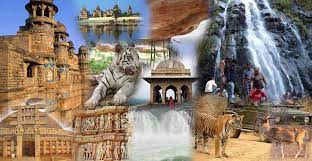Excursions Near Bhopal

Sanchi / Udaigiri Sanchi is known for its Stupas, monasteries, temples and pillars dating from the 3rd century to the 12th century. The most famous of these monuments, is the Sanchi Stupa 1, which was originally built by the Mauryan Emperor Ashoka, the governor of Ujjayini, whose wife Devi was the daughter of a merchant from adjacent Vidisha. Their son Mahindra and daughter Sanghamitra were born in Ujjayini and sent to Srilanka, where they converted the King, the Queen and their people to Buddhism.Sanchi in Madhya Pradesh is located 46 kilometers away from Bhopal it is also known as the World Heritage Site. Sanchi has a strong Buddhist heritage also. Tourism in Madhya Pradesh receives a momentum with a tour to Sanchi that also reveals testimony of Gupta architecture besides the Buddhists ruins. Bhojpur Bhojpur is named after its founder, the Parmara king Bhoj. Bhojpur is situated 28 km from Bhopal on the banks of river Betwa. Bhojpur is famous for the incomplete Bhojeshwar temple, whic...


